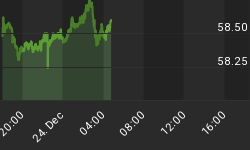The Persian Gulf emirate Dubai is seeking to defer debt payment on nearly $90 billion in liabilities from their state-run companies. Like many other over-leveraged enterprises and some countries across the globe, the government of Dubai made massive bets on real estate that have since gone sour. But no matter where in the world such a case occurs, the ramifications of taking on too much debt are always the same. Unless the party in question can be bailed out, the deleveraging process usually leads to default and insolvency. It makes no difference whether it is a business or a country, the entity in question must always be able to service its debt either through revenue or taxation. If the enterprise or state becomes too extended, they become perilously dependent on a perpetually growing economy and on interest rates that remain perpetually low.
It is not just Latvia, Ukraine and Dubai that need to be concerned. Even great countries like Japan and the United States need to take heed. The examples produced over the last few weeks and months should send a stark warning to the U.S. that we cannot continue to operate with this level of monetary and fiscal profligacy and expect to always have a favorable outcome from our Treasury auctions. I know it is common knowledge that there will always be a healthy appetite for US debt. And that the world will always have an inexhaustible appetite to hold our currency. But remember it was also common knowledge that the value of real estate could never fall on a national basis.
The facts are that we have never been more overleveraged as a country. Our record National debt now stands at over $12 trillion, while total non-financial debt as of Q2 is a record $34.3 trillion. Household debt as a percentage of GDP now stands at 96.5% and that same debt expressed as a percentage of disposable income is at 129%--both just under their high water marks. And perhaps most surprising, given our record low and artificially produced interest rates, is that our Financial Obligation Ratio, (which measures debt service payments as a percentage of disposable income) is less than one percentage point off its all time high and now stands at 16.65%. And of course the icing on the cake is our projected debt over the next 75 years is over $106 trillion.
Our annual budget deficit of $1.4 trillion in 2009 shattered all previous records and the projections are that another trillion dollars per annum will be added over the next 10 years. The amount of debt that needs to be rolled over each year is increasing because of government's decision to finance our debt at the short end of the yield curve. The result of which means each year the U.S. Treasury must sell trillions of dollars in debt into the market -- not just the difference between revenue and expenditures.
So far there is little evidence of distress in the bond market. Last week the Treasury sold $44 billion in two-year notes at a record low yield of .802%. And even though the average yield on the 10 year note has been 7.31% for the past 40 years, the yield stands at just 3.22% today. The all important indirect buying (which includes foreign central banks) of U.S. debt jumped to 45% in 2009 from just 29% last year.
But the U.S dollar continues its vicious bear market that went into overdrive this decade. The deadly combination of skyrocketing debt sales along with a chronically weak currency may soon pull the rug out from our Treasury auctions. It is completely antithetical to expect record low interest rates to persist while debt issuance continues to break records. Interest rates must rise dramatically to reflect the record level of supply and the potential inflation represented by having a $2 trillion monetary base. The added payments resulting from those rising interest rates will send deficits soaring even higher. Sooner rather than later foreign appetite for US debt will wane simply because they will have a concentrated position in an asset that is falling in value and held in a currency that is being debased. We must defend the value of the US dollar now and stop the endless cycle of bailouts, inflation and debt before the only person who shows up at our Treasury auctions is Banana Ben Bernanke with his printing press.
Be sure to listen in on my Mid-Week Reality Check and to follow my blog Pentonomics
Follow me on Twitter: http://twitter.com/michaelpento
















